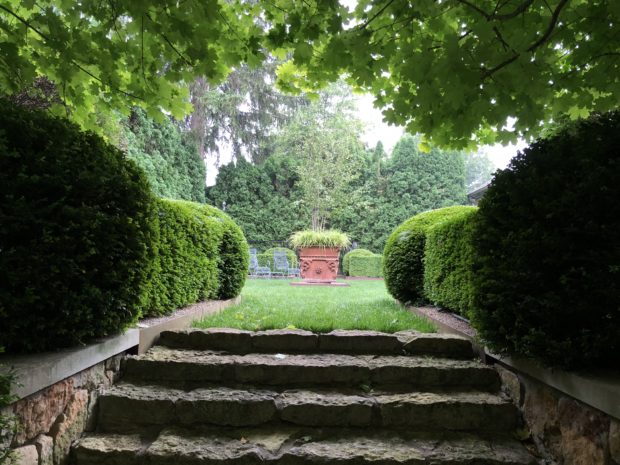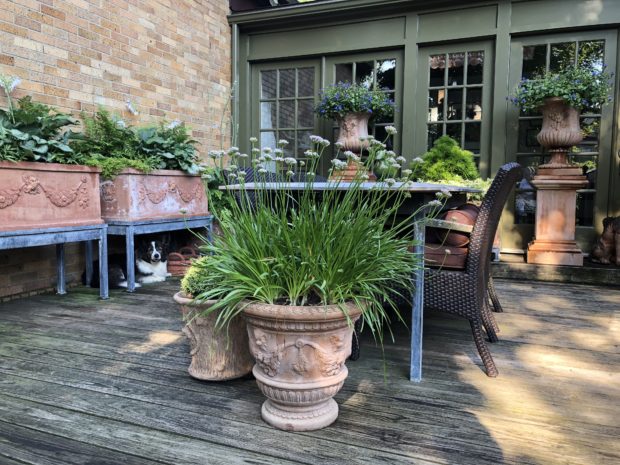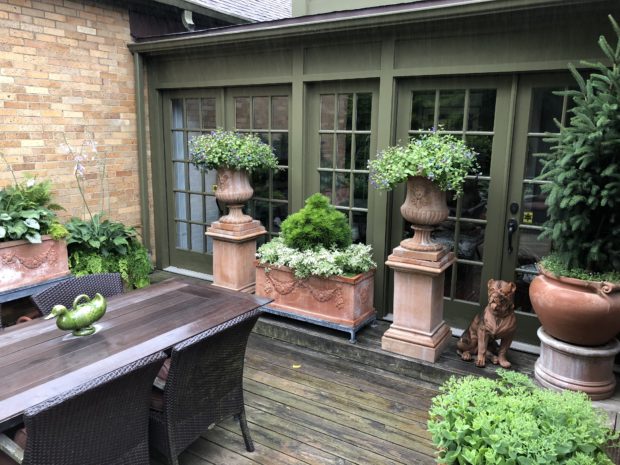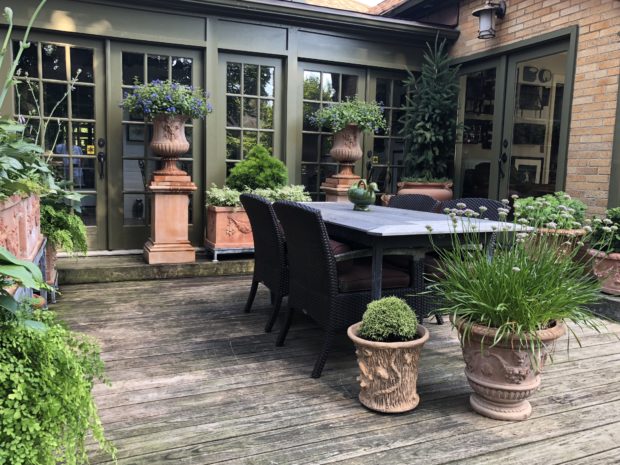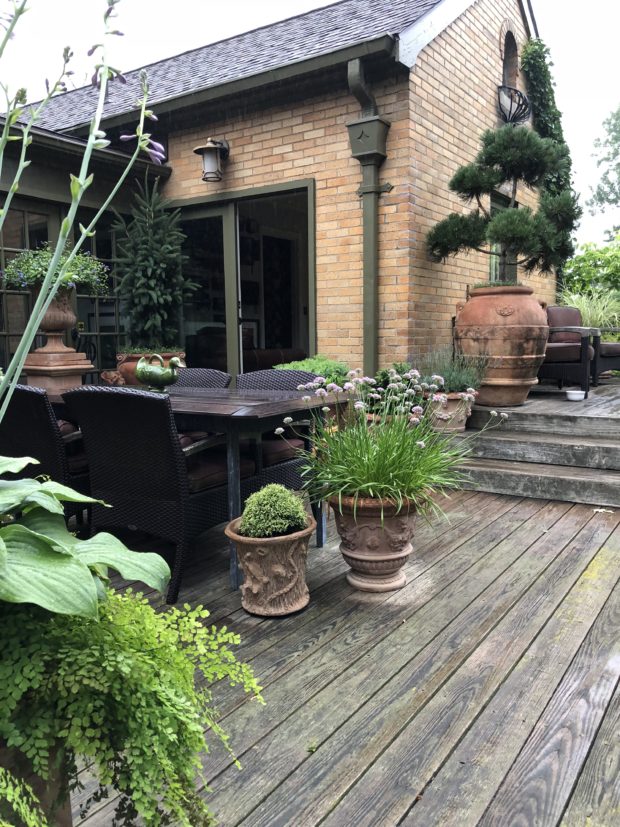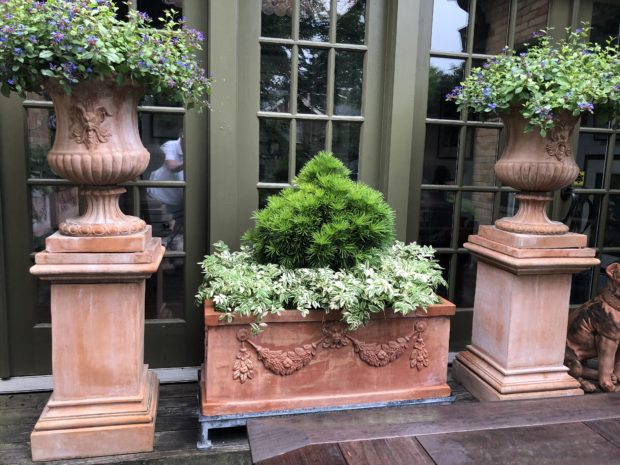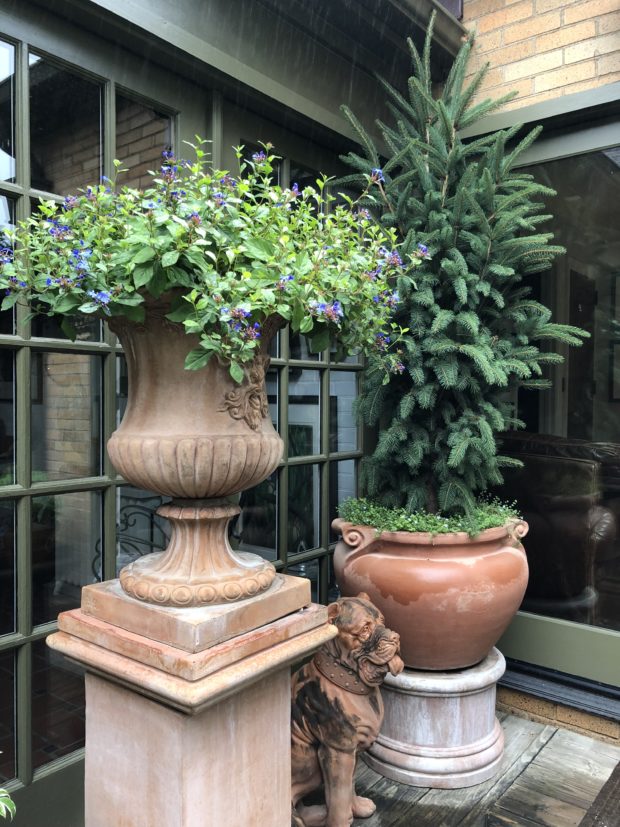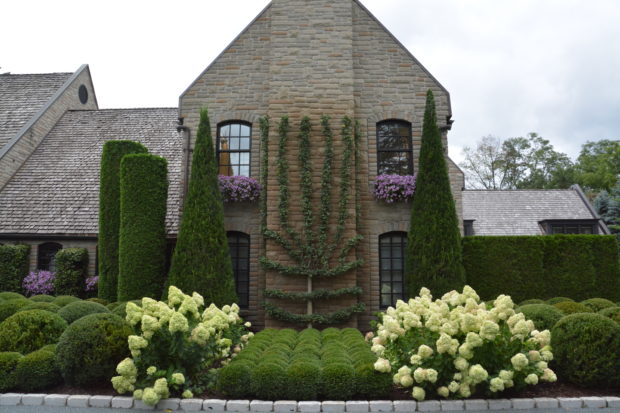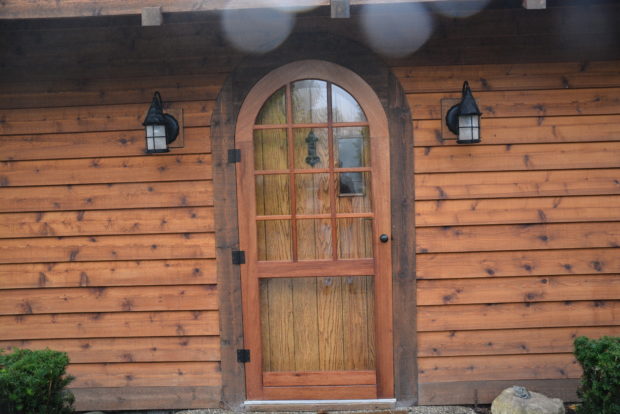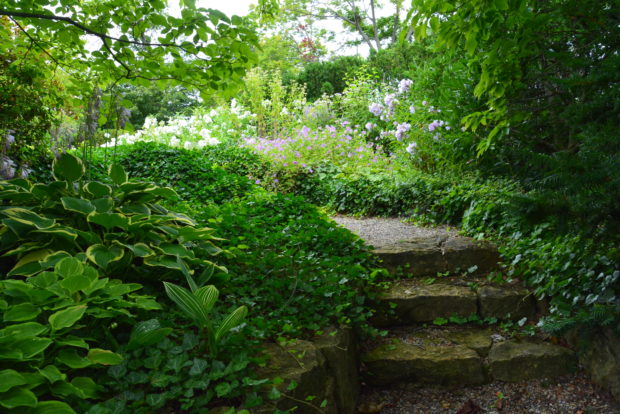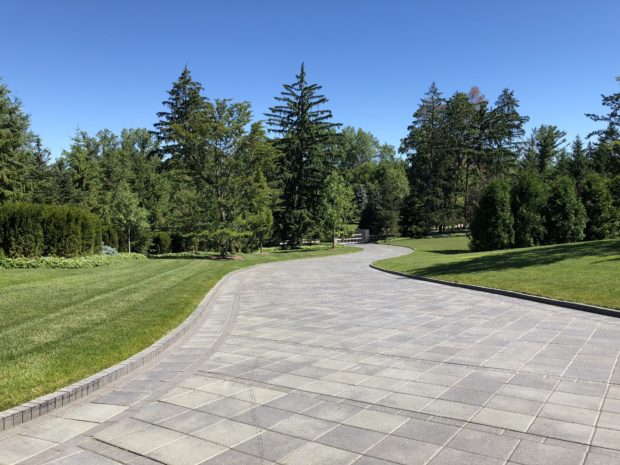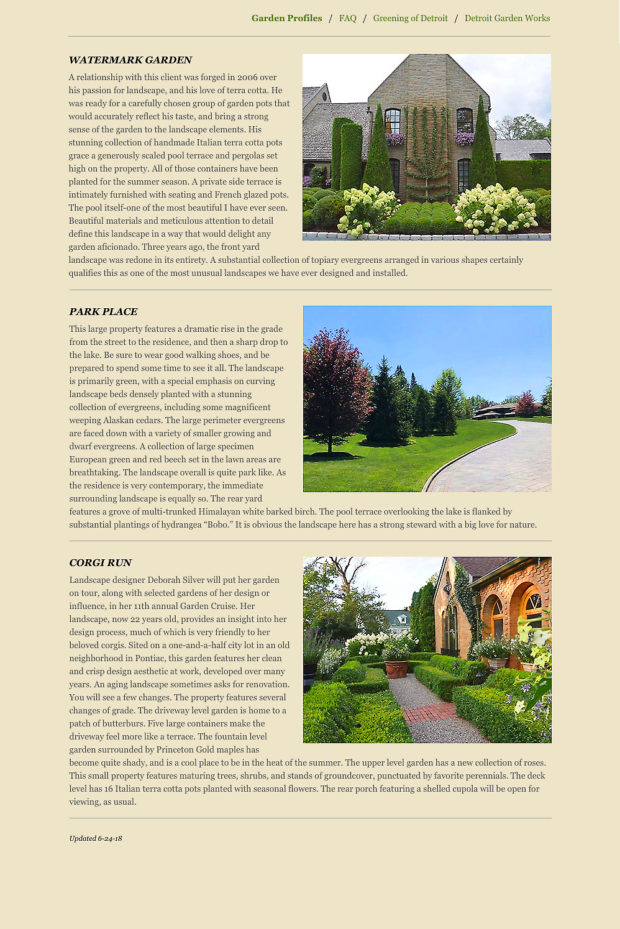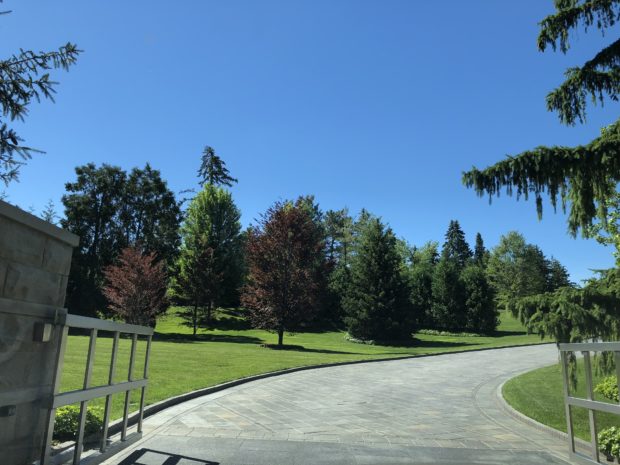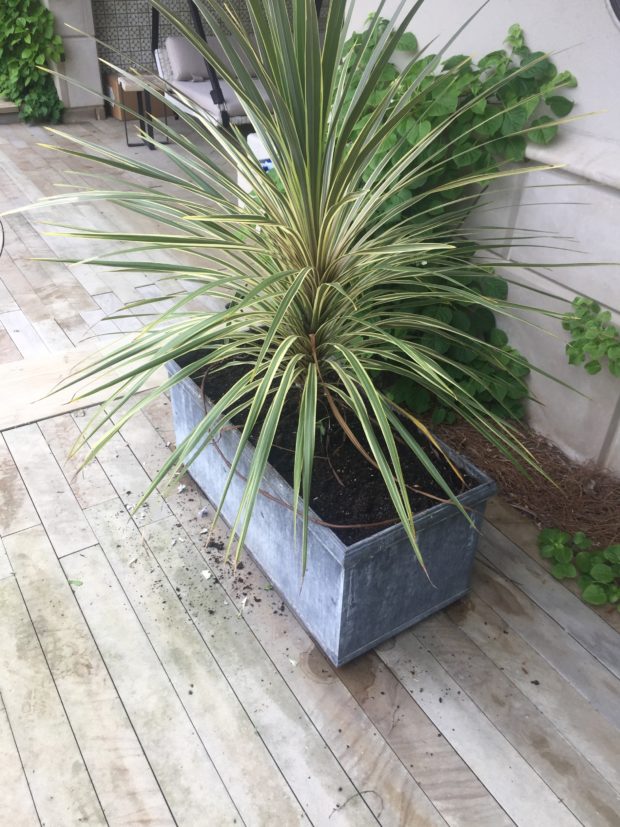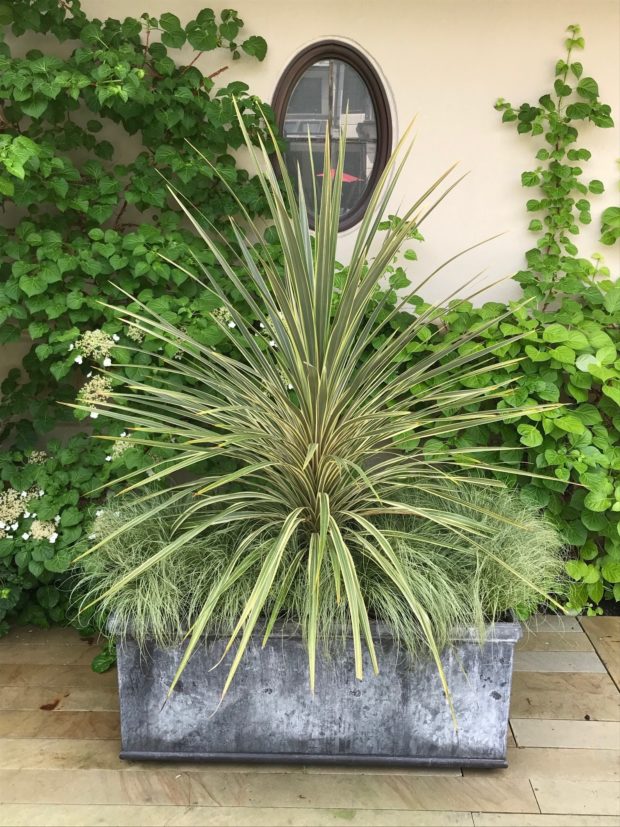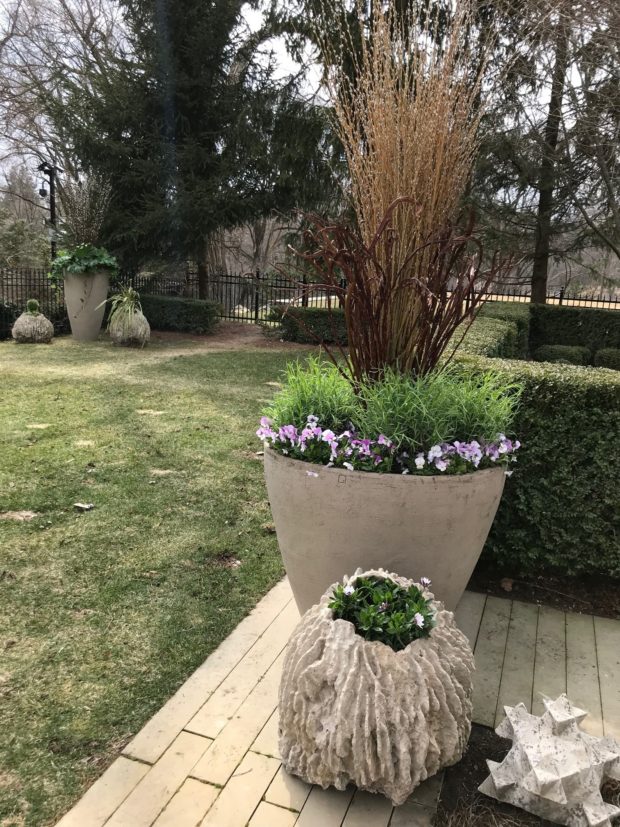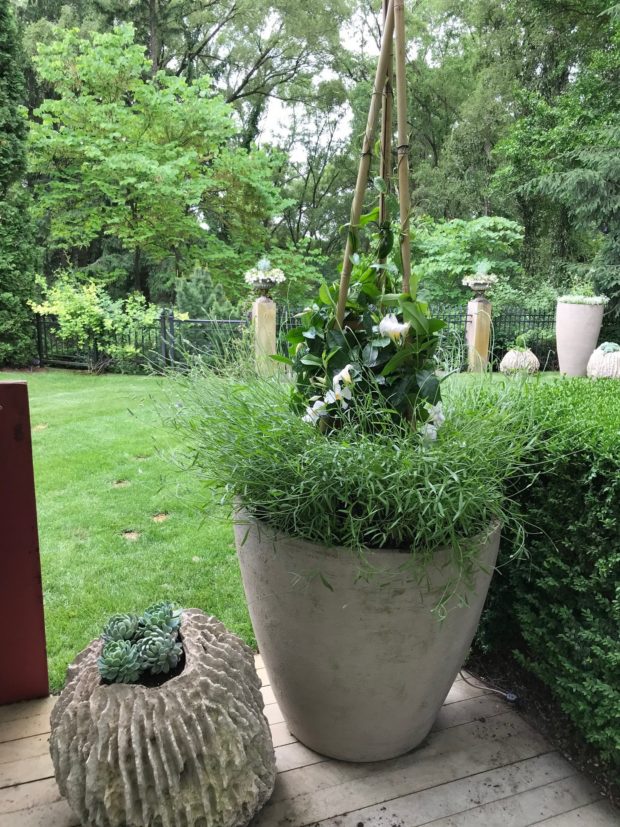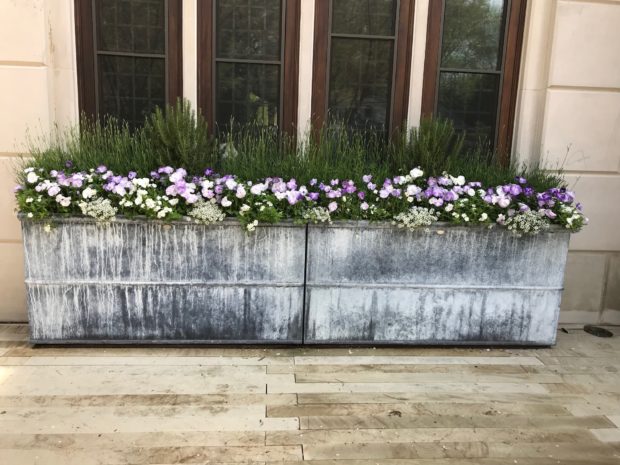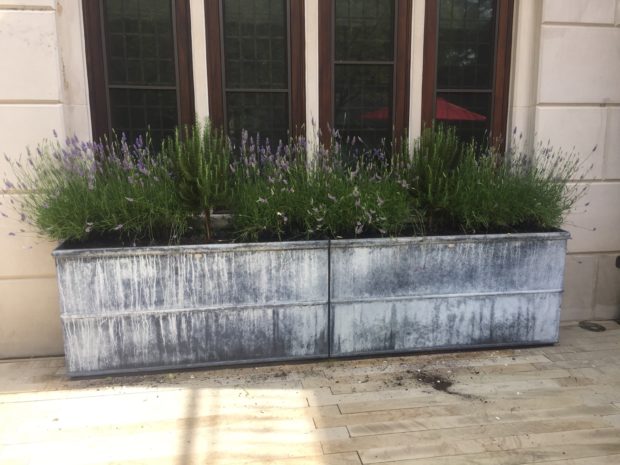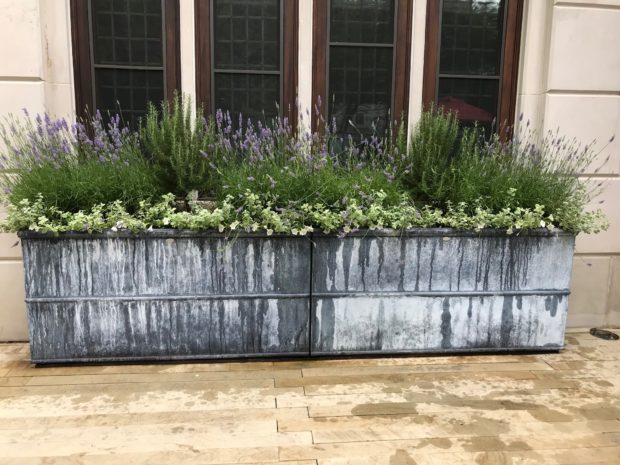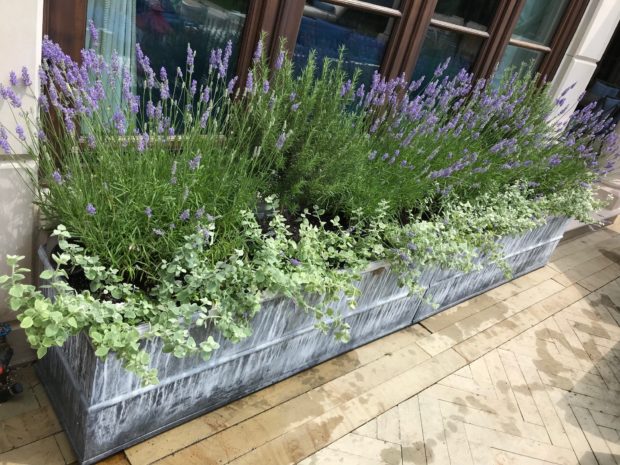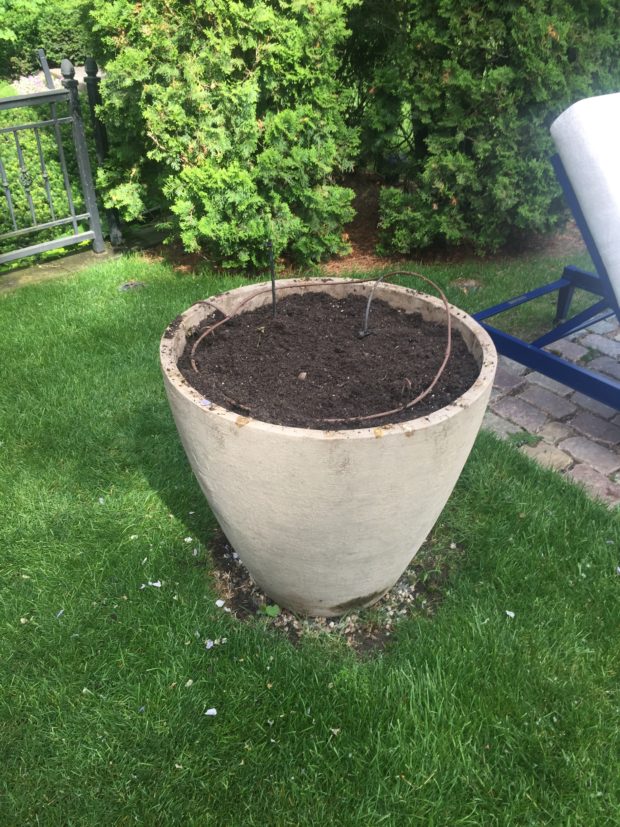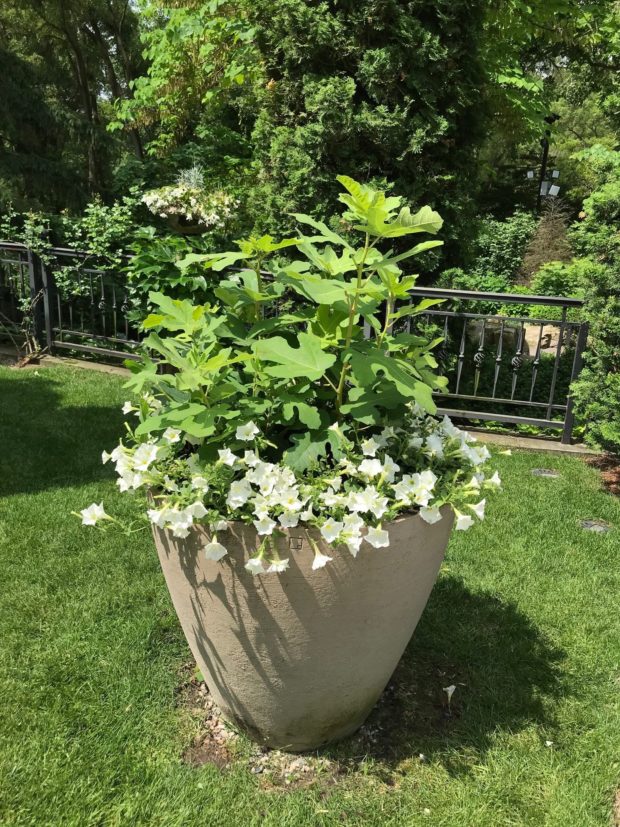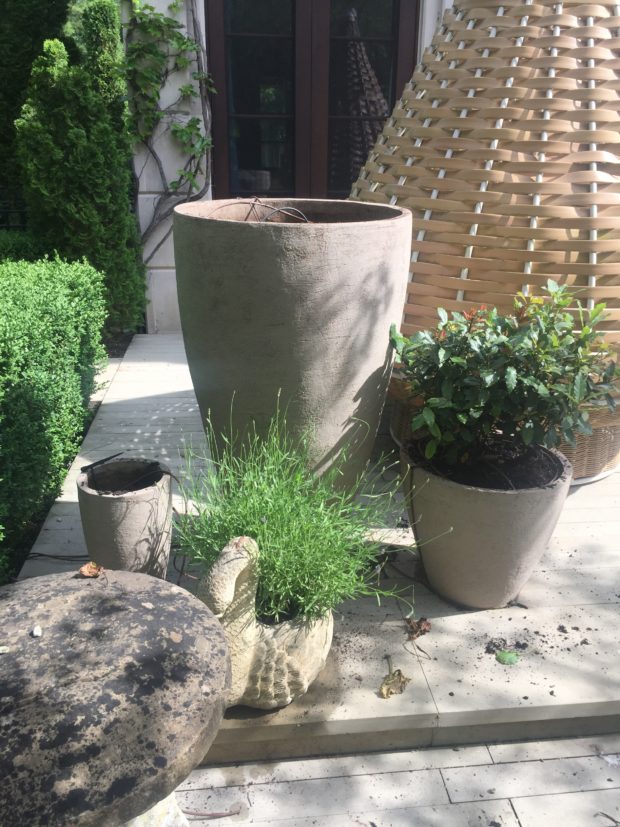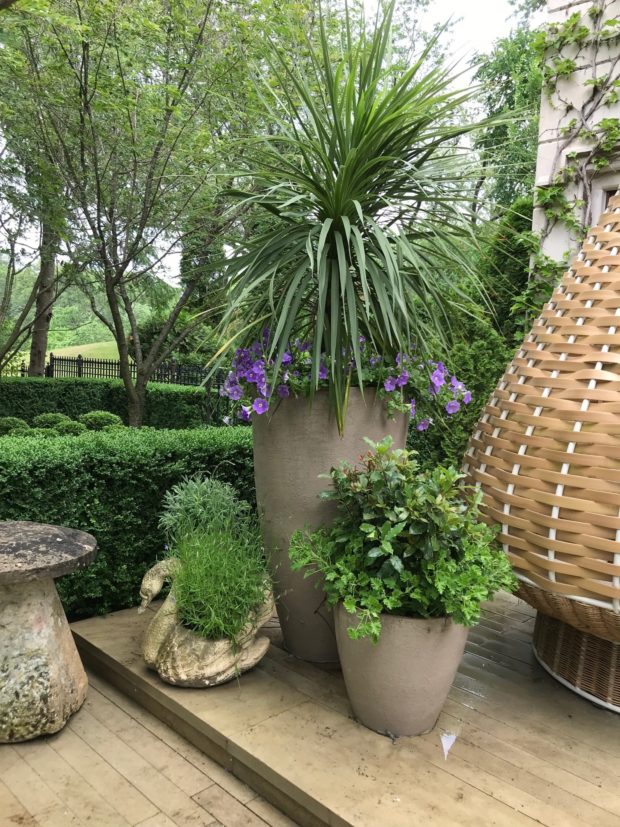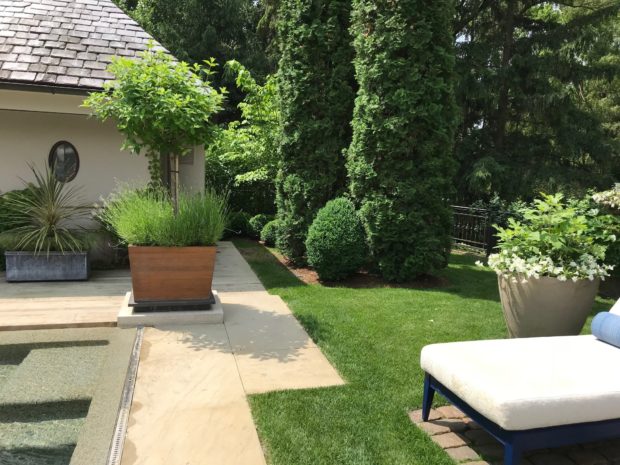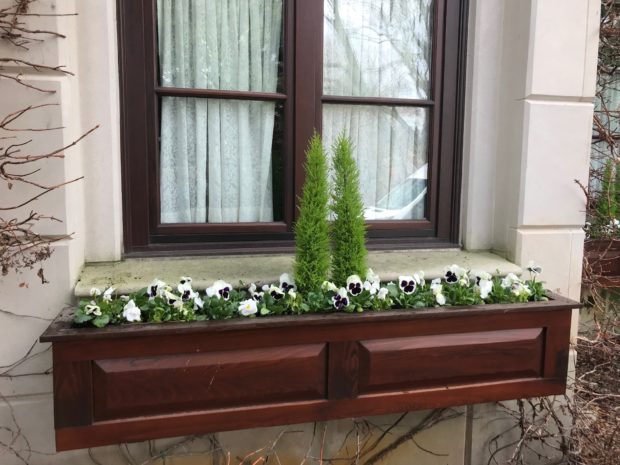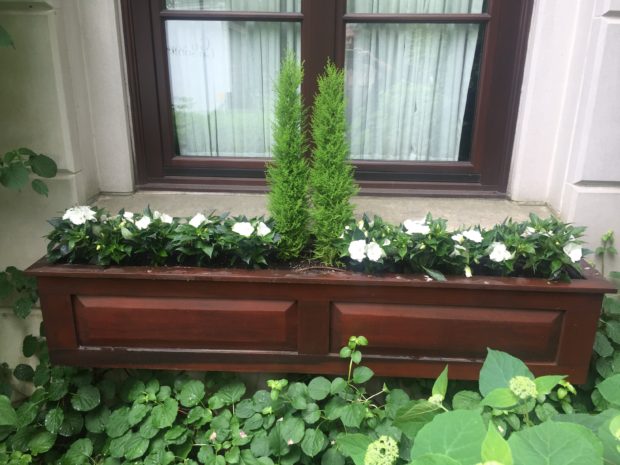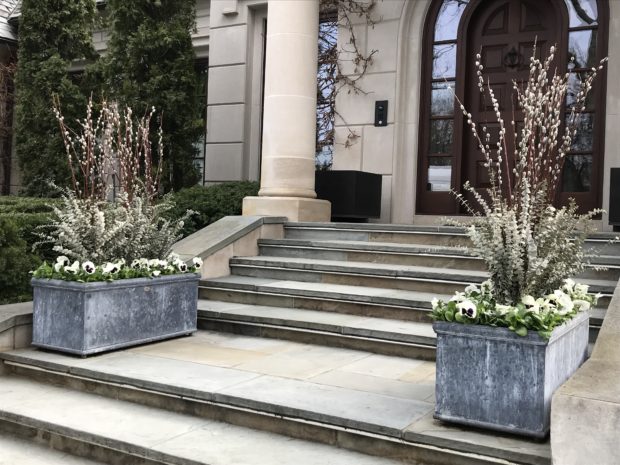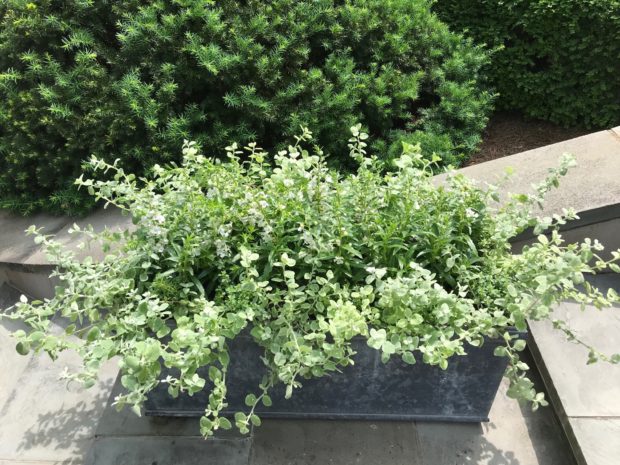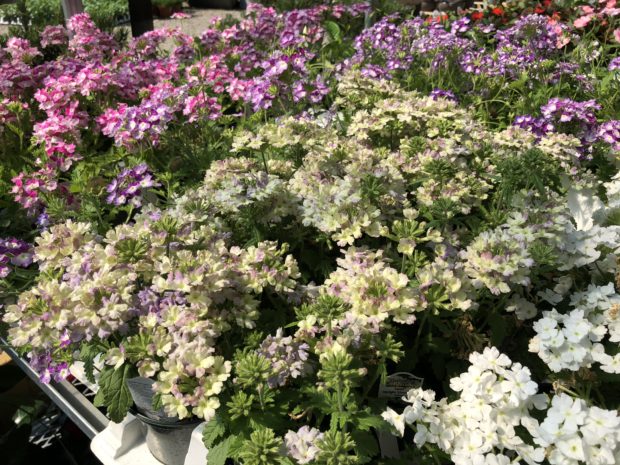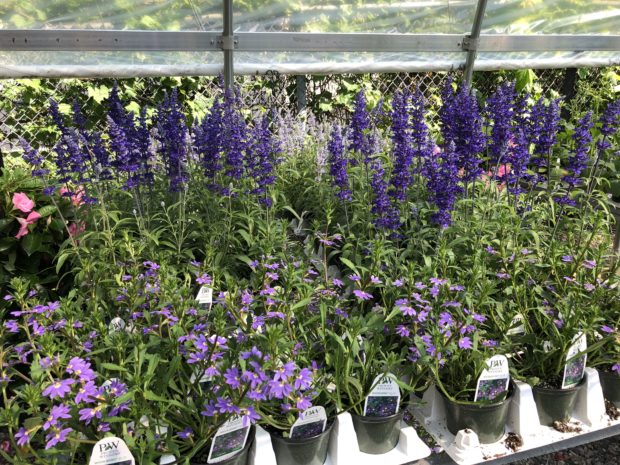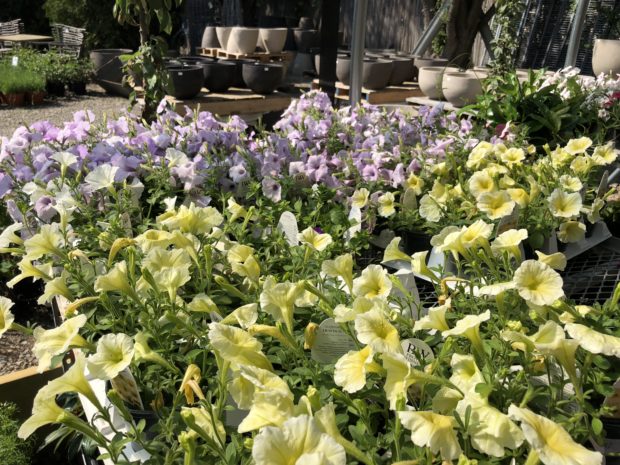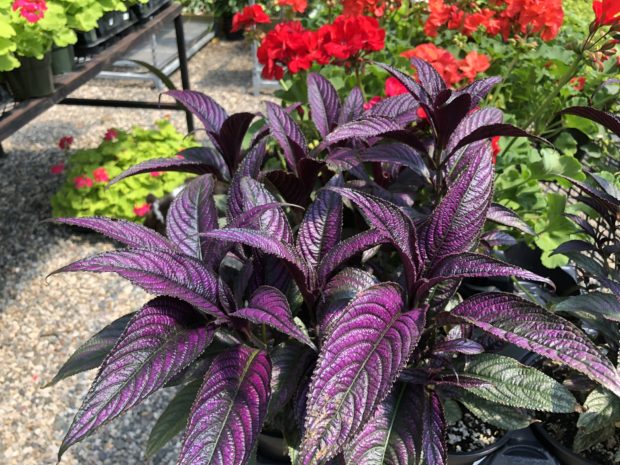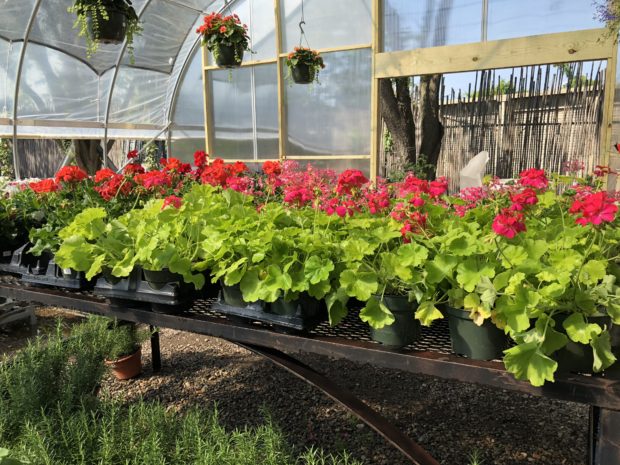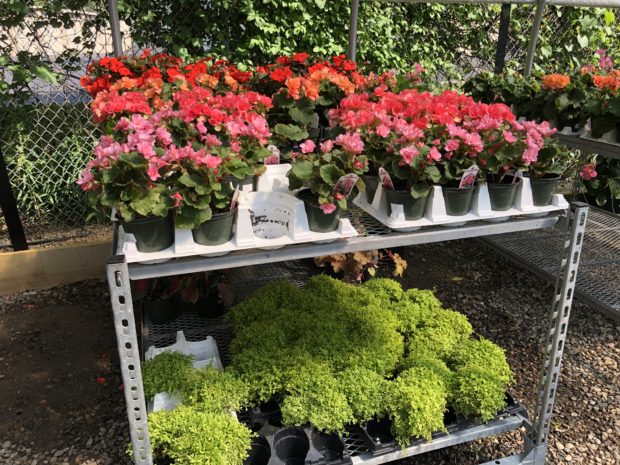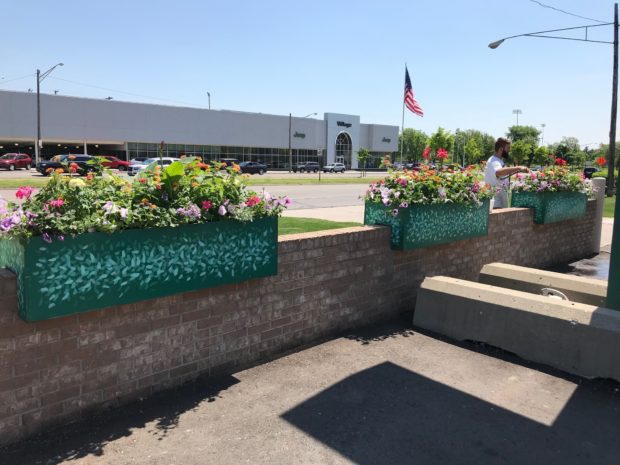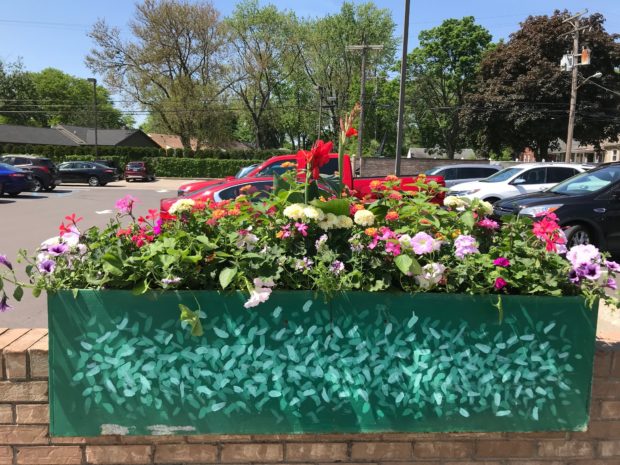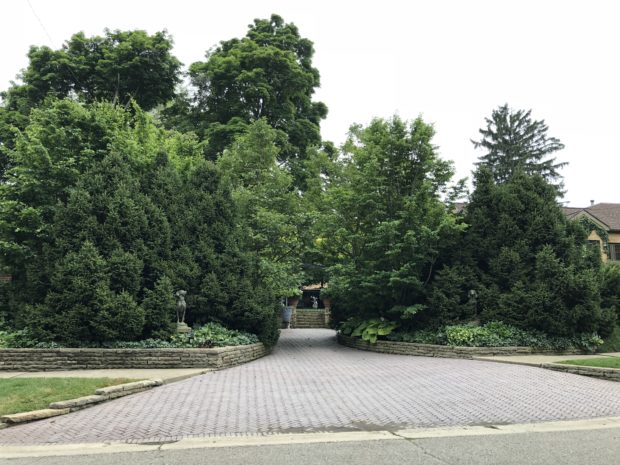 Our 11th annual Garden Cruise this past Sunday July 15 was a success in a number of ways. We sold a record 405 tickets, and hosted 150 people at Detroit Garden Works for our after tour bites and beverage reception. The fine dining part of that reception was engineered and presented by Toni Sova, the chef in chief of Nostimo Kitchen. Her idea to serve Froses- frozen rose cocktails – was a big hit, considering the temperature was hovering around 90 degrees. A client who owns Argent Tape and Label sponsored that reception-thank you Lynn and Fred. The Erb Foundation had pledged to match funds raised from ticket sales up to 10,000.00 I am happy to say we were eligible for the entire amount. A generous donor wrote a check for 5000.00, meaning we raised 32,600.00 for the Greening of Detroit this year. A record. I am very pleased indeed to have sponsored an 11th tour. I am a member of the Board of the Greening, but I never go to their meetings. My contribution to them is to raise money for their projects, as they plant trees in our city. They teach people how to make things grow. Their garden at Lafayette Park is a vegetable garden that produces many hundreds of pounds of produce that is sold at the Eastern Market, or donated to those in need. It feels good, being a fund raising arm of an agency that benefits our city. Will there be a tour in 2019-yes.
Our 11th annual Garden Cruise this past Sunday July 15 was a success in a number of ways. We sold a record 405 tickets, and hosted 150 people at Detroit Garden Works for our after tour bites and beverage reception. The fine dining part of that reception was engineered and presented by Toni Sova, the chef in chief of Nostimo Kitchen. Her idea to serve Froses- frozen rose cocktails – was a big hit, considering the temperature was hovering around 90 degrees. A client who owns Argent Tape and Label sponsored that reception-thank you Lynn and Fred. The Erb Foundation had pledged to match funds raised from ticket sales up to 10,000.00 I am happy to say we were eligible for the entire amount. A generous donor wrote a check for 5000.00, meaning we raised 32,600.00 for the Greening of Detroit this year. A record. I am very pleased indeed to have sponsored an 11th tour. I am a member of the Board of the Greening, but I never go to their meetings. My contribution to them is to raise money for their projects, as they plant trees in our city. They teach people how to make things grow. Their garden at Lafayette Park is a vegetable garden that produces many hundreds of pounds of produce that is sold at the Eastern Market, or donated to those in need. It feels good, being a fund raising arm of an agency that benefits our city. Will there be a tour in 2019-yes.
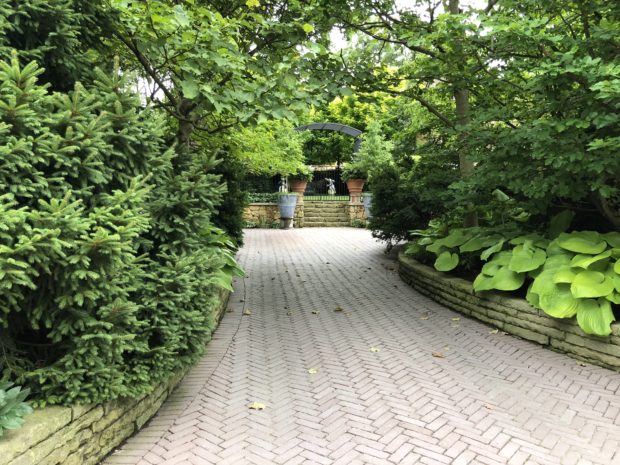 I have put my own house and garden on tour for all 11 cruises. That has become fairly stress free over the years. I the early years I fretted about every detail. But it became obvious that visitor gardeners were simply appreciative that I took the time and trouble to garden, and invite people to see it. Visitors to my garden have seen all kinds of things that are not perfectly lovely, and some things that are downright bad looking. I have never had a tour visitor point those things out to me, or ask me what I had in mind to fix them. The 2014 tour, coming on the heels of a bitterly cold winter in 2013-14 that damaged boxwood and killed back roses, was taken by gardeners who had similar troubles of their own at home. What was to talk about? Every gardener had wreckage at home. Inevitably, some plants or spots are not at their best on tour.
I have put my own house and garden on tour for all 11 cruises. That has become fairly stress free over the years. I the early years I fretted about every detail. But it became obvious that visitor gardeners were simply appreciative that I took the time and trouble to garden, and invite people to see it. Visitors to my garden have seen all kinds of things that are not perfectly lovely, and some things that are downright bad looking. I have never had a tour visitor point those things out to me, or ask me what I had in mind to fix them. The 2014 tour, coming on the heels of a bitterly cold winter in 2013-14 that damaged boxwood and killed back roses, was taken by gardeners who had similar troubles of their own at home. What was to talk about? Every gardener had wreckage at home. Inevitably, some plants or spots are not at their best on tour.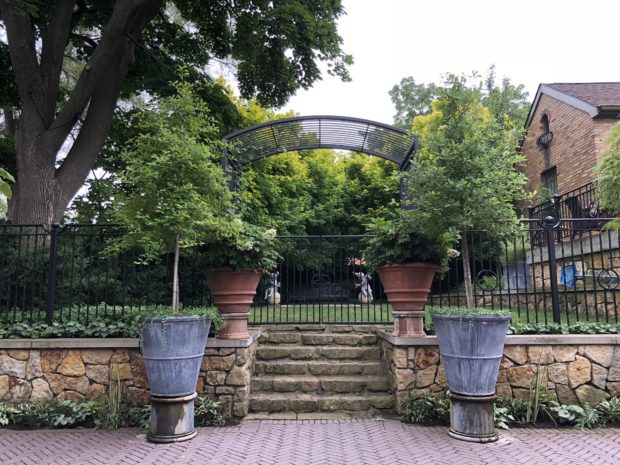 No stress, being on tour? I have a small and unruly perennial garden that looks its best later in the summer. The hardy hibiscus, phlox, platycodon and bear’s britches begin to bloom at the end of July. The roses will have a smaller flush then. On the tour, that garden is a tall tangle of green with not much going on to recommend it, but no one seems to mind. I also have a company that maintains my landscape. They do the worry and the work of making it presentable. My yard is what it is. Better some years than others. I like to enjoy the tour too. It is the one summer day I spend at home, and I want to relax and enjoy that day.
No stress, being on tour? I have a small and unruly perennial garden that looks its best later in the summer. The hardy hibiscus, phlox, platycodon and bear’s britches begin to bloom at the end of July. The roses will have a smaller flush then. On the tour, that garden is a tall tangle of green with not much going on to recommend it, but no one seems to mind. I also have a company that maintains my landscape. They do the worry and the work of making it presentable. My yard is what it is. Better some years than others. I like to enjoy the tour too. It is the one summer day I spend at home, and I want to relax and enjoy that day.
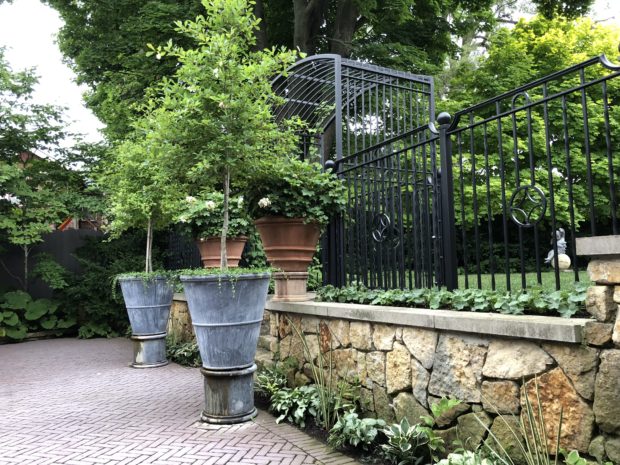 However, I do fret about my pots. People who have taken the tour multiple times like to see how I have done my container plantings. I do like to do them differently every year, with some sort of point of view in mind. I might be interested in exploring a certain color scheme, or maybe texture is the organizing metaphor. Sometimes I will take a fancy to a certain plant, or a leaf size, and a scheme gets a life from there. In April, I start to think about what direction I might like to take. Well, April was bitter cold this year. Unbelievably, we had snow on the ground for most of the month. My hellebores were buried in the remains of the snow until well in to May. I was not thinking about planting summer pots.
However, I do fret about my pots. People who have taken the tour multiple times like to see how I have done my container plantings. I do like to do them differently every year, with some sort of point of view in mind. I might be interested in exploring a certain color scheme, or maybe texture is the organizing metaphor. Sometimes I will take a fancy to a certain plant, or a leaf size, and a scheme gets a life from there. In April, I start to think about what direction I might like to take. Well, April was bitter cold this year. Unbelievably, we had snow on the ground for most of the month. My hellebores were buried in the remains of the snow until well in to May. I was not thinking about planting summer pots.
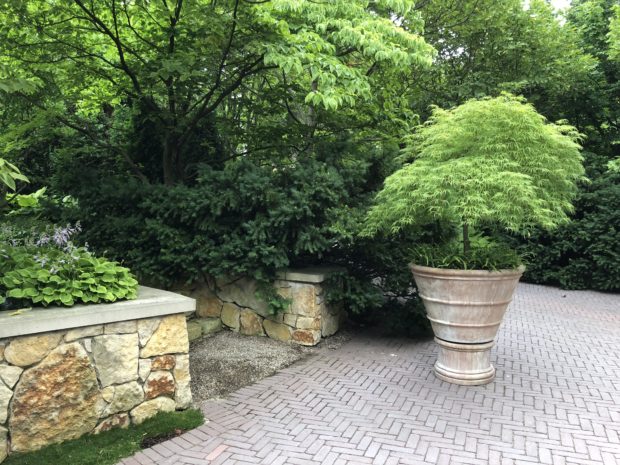 In mid May, the temperatures zoomed into the 80’s and 90’s. We were scrambling to plant our customers pots as quickly and efficiently as we could. The reality that it was spring was overcome by an emotional certainty that the summer had arrived to empty pots. Add a little anxiety to the process of planting pots in very hot weather makes for a planting season that takes even more focus and concentration than usual. I wasn’t thinking about my pots at home then either.
In mid May, the temperatures zoomed into the 80’s and 90’s. We were scrambling to plant our customers pots as quickly and efficiently as we could. The reality that it was spring was overcome by an emotional certainty that the summer had arrived to empty pots. Add a little anxiety to the process of planting pots in very hot weather makes for a planting season that takes even more focus and concentration than usual. I wasn’t thinking about my pots at home then either.
 My landscape super finally told me in June that maybe I need to at least get the pots out of the garage. Perhaps that would help push the process along a little. I went along with his suggestion. So for weeks I was looking at empty pots, and still having no thoughts about what to put in them. Fortunately, inspiration finally decided to make an appearance. A client who would be on tour had asked me several years ago to plant birch trees in a pair of very large planters. Amazingly they survived the winter. After under planting them with a mostly green and white annual scheme, I decided I really liked the look. Trees in pots? Why not?
My landscape super finally told me in June that maybe I need to at least get the pots out of the garage. Perhaps that would help push the process along a little. I went along with his suggestion. So for weeks I was looking at empty pots, and still having no thoughts about what to put in them. Fortunately, inspiration finally decided to make an appearance. A client who would be on tour had asked me several years ago to plant birch trees in a pair of very large planters. Amazingly they survived the winter. After under planting them with a mostly green and white annual scheme, I decided I really liked the look. Trees in pots? Why not?
 So I decided to forego annual and tropical plants in my pots in favor of trees, shrubs and perennials. At last, a decision. But the real work of it was to come. I still had plenty of landscape work to do, so David did all of the shopping. He is a great choice for that, primarily because he is as good a hort head as anyone I know, and he loves shopping for plants. He also has the patience to text pictures and talk to me on the phone. But neither one of us really anticipated how difficult and time consuming this would prove to be. Planting the Japanese maple in a large terracotta pot on the driveway was easy. It had spent the last 2 summers in that pot. However, it did take 3 people to dig it out of the nursery and lift it up into the pot. The two large Branch pots on the driveway would also get trees.
So I decided to forego annual and tropical plants in my pots in favor of trees, shrubs and perennials. At last, a decision. But the real work of it was to come. I still had plenty of landscape work to do, so David did all of the shopping. He is a great choice for that, primarily because he is as good a hort head as anyone I know, and he loves shopping for plants. He also has the patience to text pictures and talk to me on the phone. But neither one of us really anticipated how difficult and time consuming this would prove to be. Planting the Japanese maple in a large terracotta pot on the driveway was easy. It had spent the last 2 summers in that pot. However, it did take 3 people to dig it out of the nursery and lift it up into the pot. The two large Branch pots on the driveway would also get trees.
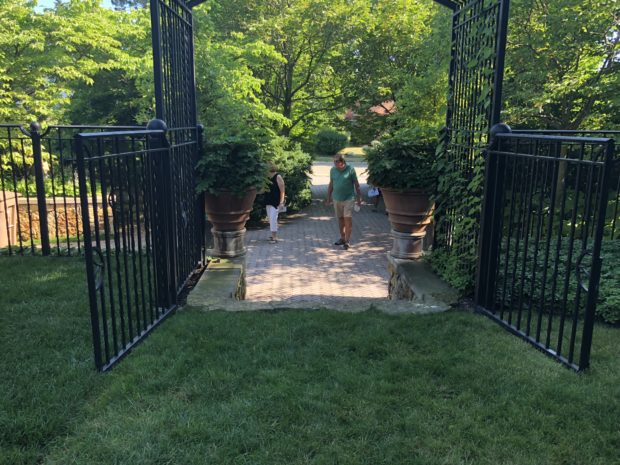 Suffice it to say we looked at a lot of trees. David found a pair of black gums -nyssa sylvatica – that featured a full head of leaves, and root balls small enough to fit in a 30″ diameter pot. That shopping trip involved 3 nurseries, and plenty of conversation.
Suffice it to say we looked at a lot of trees. David found a pair of black gums -nyssa sylvatica – that featured a full head of leaves, and root balls small enough to fit in a 30″ diameter pot. That shopping trip involved 3 nurseries, and plenty of conversation.
 David and I were talking non stop for better than 3 days about the plants for the pots. Of course none of the plants I used were available at the shop. It was vastly more work to pick the plant material, as the size of the root balls was as big a concern as the plant itself.
David and I were talking non stop for better than 3 days about the plants for the pots. Of course none of the plants I used were available at the shop. It was vastly more work to pick the plant material, as the size of the root balls was as big a concern as the plant itself.
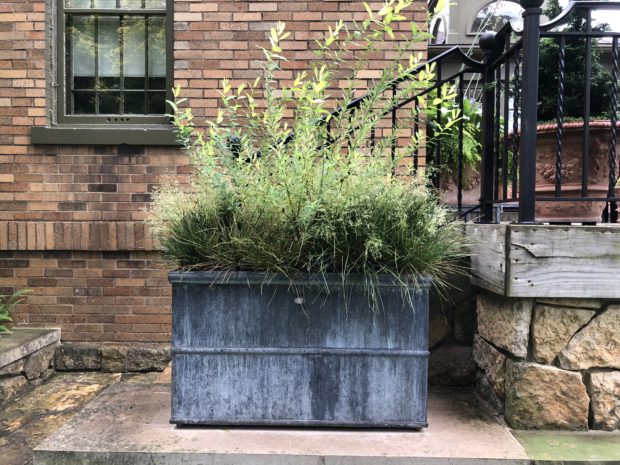 Do I like my pots planted with trees, shrubs and perennials? Oh yes, I do. I am actually surprised how much I like them.
Do I like my pots planted with trees, shrubs and perennials? Oh yes, I do. I am actually surprised how much I like them.
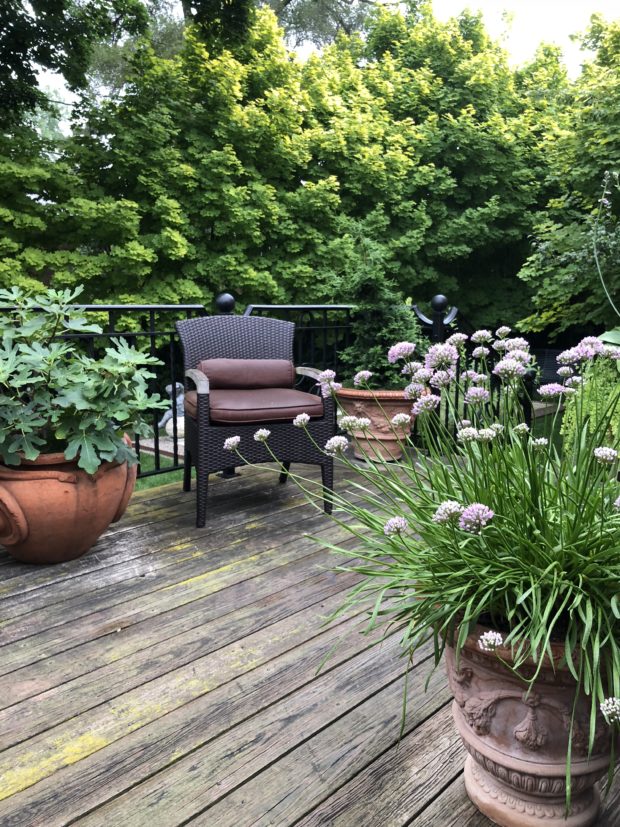 Planting shrubs and perennials in my containers brought the landscape onto my deck. Though I was certain none of the plants would grow, they have. Maybe they have just settled down into their environment. The planting seems appropriate and natural to a Michigan garden environment. Almost everyone was curious about what I would do with the plants come the end of the season. I will plant the trees and shrubs at my landscape yard-we have 7 acres of land there. The perennials in ground in the driveway I will leave, and see if they winter over. Perhaps that hort head who was so instrumental in getting these pots planted before the tour will take some of the plants home to his own garden. A good bit of the fun of planting containers is the opportunity to do it differently every year-so all of these plants will need to find good homes. And for those of you who are too far away to have taken our tour, I hope you enjoy all of the pictures.
Planting shrubs and perennials in my containers brought the landscape onto my deck. Though I was certain none of the plants would grow, they have. Maybe they have just settled down into their environment. The planting seems appropriate and natural to a Michigan garden environment. Almost everyone was curious about what I would do with the plants come the end of the season. I will plant the trees and shrubs at my landscape yard-we have 7 acres of land there. The perennials in ground in the driveway I will leave, and see if they winter over. Perhaps that hort head who was so instrumental in getting these pots planted before the tour will take some of the plants home to his own garden. A good bit of the fun of planting containers is the opportunity to do it differently every year-so all of these plants will need to find good homes. And for those of you who are too far away to have taken our tour, I hope you enjoy all of the pictures.
